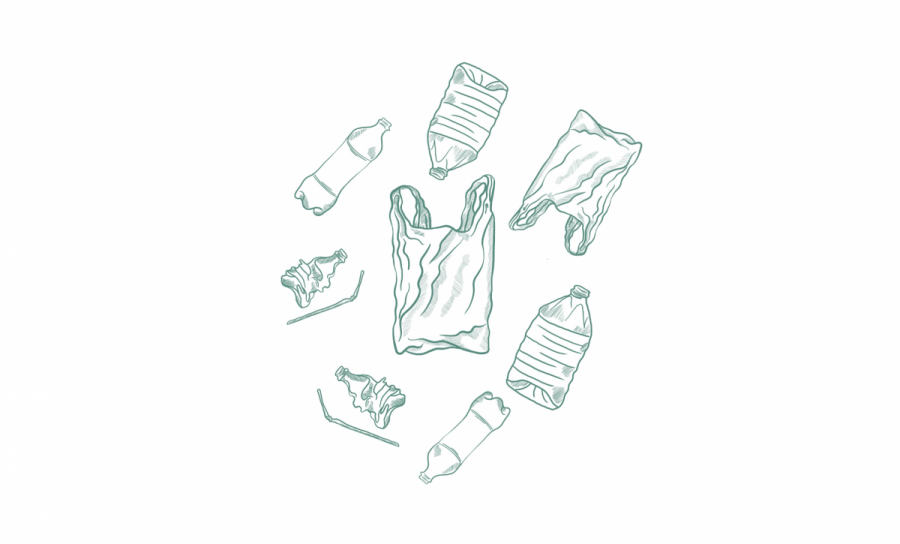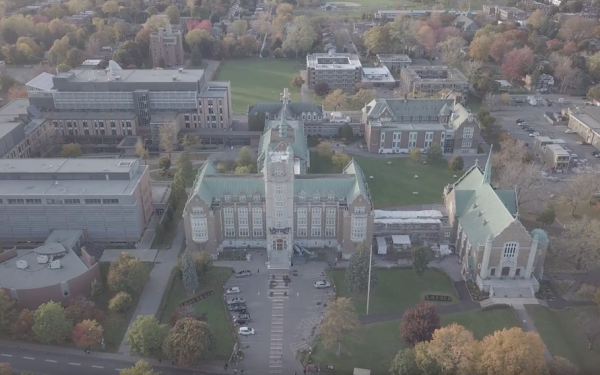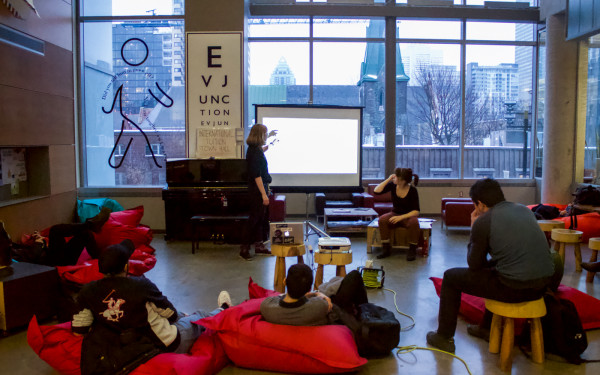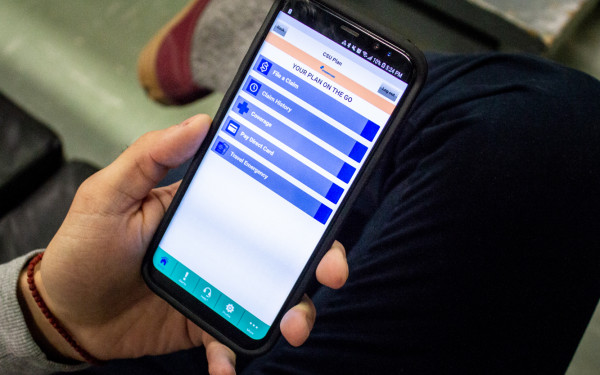Single-Use Plastics Will Be Banned: Now What?
The Continuing Battle For a More Environmental Future
As of Sept. 27 bagging up groceries with a non-reusable plastic sac is no longer possible in Montreal.
Your local take-out restaurant gave you food in a paper bag, with recyclable utensils, while Starbucks handed you one of their signature green paper straws.
The changes came after a governmental decision was passed in June. The Canadian government announced the ban on some single-use plastics: plastic bags, straws, cutlery, food service ware and stir sticks. According to the government, the ban will prohibit the manufacturing and importation of these six items as of Dec. 20, and a year later, it will ban its sales completely.
It is important to note that the Montreal ban is separate from the Canadian nationwide ban. The rule applies to all 19 boroughs of the city.
According to Sarah King, head of the oceans and plastics division at Greenpeace, the six items banned are not enough. She explained that, in the short term, bottles, cigarette filters, cups, lids, wrappers and multi-layer packaging need to be added to the list.
The plastic bag was created in 1965 by Swedish engineer Sten Gustaf Thulin. It aimed to reduce the use of paper bags and help to save the environment. Despite its seemingly good intentions, countries have started to ban it completely 57 years after its invention, Canada notably being one of them. In addition, the U.K., France, Spain, India, Kenya, Bangladesh, Zimbabwe, China and Australia are also on the path to a more sustainable future. The United States only lists California, Delaware, Connecticut, Maine, Hawaii, Oregon, New York and Vermontas as the states who enact the same ban.
As reported by the Canadian government website, three million tonnes of plastic waste are thrown away every year. Only eight per cent of the waste is recycled, while the rest ends up in our landfills, waste-to-energy facilities or abandonned, polluting the environment and diverse ecosystems. In addition, Canadians use almost 15 billion plastic bags every year, and close to 57 million straws every day.
“We can’t recycle our way out of this,” said Antony Merante, the plastics campaigner at Oceana.
Merante advocates for better regulations, policies and practices that eliminate unnecessary single-use plastic in the country. Among the solutions, Oceana is pushing for a reuse-refill system.
Widely used in Germany, Mexico, Chile and Brazil, the system ensures that less waste is produced. The refill and reuse system became an economic sector, supplying more jobs in the field, with a goal towards sustainability, explained Merante. “Essentially, when you grab a bottled drink and then return that bottle, it will be cleaned and refilled,” he said. Instead of recycling the item or dumping it out as waste, “ it becomes a closed-loop system,” Merante added.
King agrees. “There are many ways to incorporate the reuse and refill system, whether it is a container share system, food in bulk, soda fountains with your own container”, she clarified. Yet, King added Canada has not made a significant investment in the reuse and refill system.
Although Canada seems to be moving in the right direction, Merante said that the government has been promoting a lot of false solutions, like chemical recycling. “At its core, it’s burning plastic,” he explained. He continued to say that chemical recycling creates a lot of pollution, toxins released into the air, water and soil. This method, which is significantly less costly, is used by large plastic companies as a simple way out for them to say they do not have to change their product.
King shares this opinion, adding that the government is perpetuating the recycling myth.
“We need to see the federal government talk about the need for an overall plastic reduction, the need for real solutions that aren’t focused on recycling,” — said King.
If we do not stop using plastic, the consequences will be severe. Disposable plastics are not biodegradable, they simply break down into microplastics that continue to contaminate the environment, especially in the oceans.
“The ocean is the centre of most of the planet's food web,” said Merente. “ It's critical not to think that plastic doesn't infiltrate the ocean and that it does not affect us, because it does.” People consume five grams of microplastics per week, which is the equivalent to a credit card.
Nevertheless, the responsibility for a more sustainable future also falls on the consumer.
Concordia has been setting stones in its sustainability efforts. One of their initiatives is the Concordia Precious Plastic Project. The CP3 is a student-led organization bracing the university’s plastic waste management by recycling plastic on-site and raising awareness of the plastic crisis. They collect, wash, shred and shape new products from previously recycled materials.
The main goal of CP3 is to recycle plastics within Concordia. Apart from the help of Grey Nuns residents and staff, who allowed them to use the building’s basement as an office, they have also opened a community collection centre, in the same building, where Concordians can recycle their plastics. In 2021, the organization reported 27 kilograms of diverted plastic waste, $62,118 in raised funds and several articles and projects working towards their mission to reduce plastic on campus.
Their most popular item are earrings made from recycled shampoo containers and laundry detergent bottles.
“We do focus on transforming plastic waste, but we also strive to educate,” said Marina Correia, CP3 mentor and political science student at Concordia. CP3 organises multiple talks and provides resources for learning.
Correia has been on her sustainability journey for four and a half years, after becoming vegan. “It made me care more about, not only the animals but sustainability and the planet as a whole,” said Correia.
With the help and financial support of the SHIFT Centre for Social Transformations, Concordia University Centre for Creative Reuse, the Sustainability Action Fund and Zero Waste Concordia, the organization has been able to expand into a workspace and grow its initiative.
Nonetheless, there is more to be done. According to the CP3 mentor, Concordia can improve on its transparency, as the university has not been open enough on how they dispose of their waste. “I don’t even know where Concordia’s trash goes,” Correia mentioned. Based on the university’s website, 40 per cent of the institution’s waste can be composted. Where that trash goes after is unknown, due to the lack of information on the website, however.
To continue its mission, the organization is trying to advance its growth. “We would hope for more support from the university,” said the CP3 representative. Apart from a $20,000 Concordia Council on Student Life Fund they received from the dean of students in 2020, CP3 needs more help. The organization’s goal is to be institutionalized to further expand its reach and impact.
CP3 is recruiting members to help them grow their initiative.
On Nov. 26, the United Nations is hosting an Intergovernmental Negotiating Committee meeting in Uruguay. The meeting will be a multiple-part discussion, aiming to help the exchange of information and gather perspectives from different stakeholders across the plastics life cycle.
King said society is at a moment where it has a convergence of environmental crises. “We have the biodiversity crisis, pollution crisis, climate crisis, fossil fuels and our over-reliance on extraction is really driving these crises,” King stated, “So, hopefully, this will be a moment where we can start to move in a better direction globally,” she added, encouraging Canada to make the right environmental decisions for the country.


_600_832_s.png)




_600_375_90_s_c1.jpg)